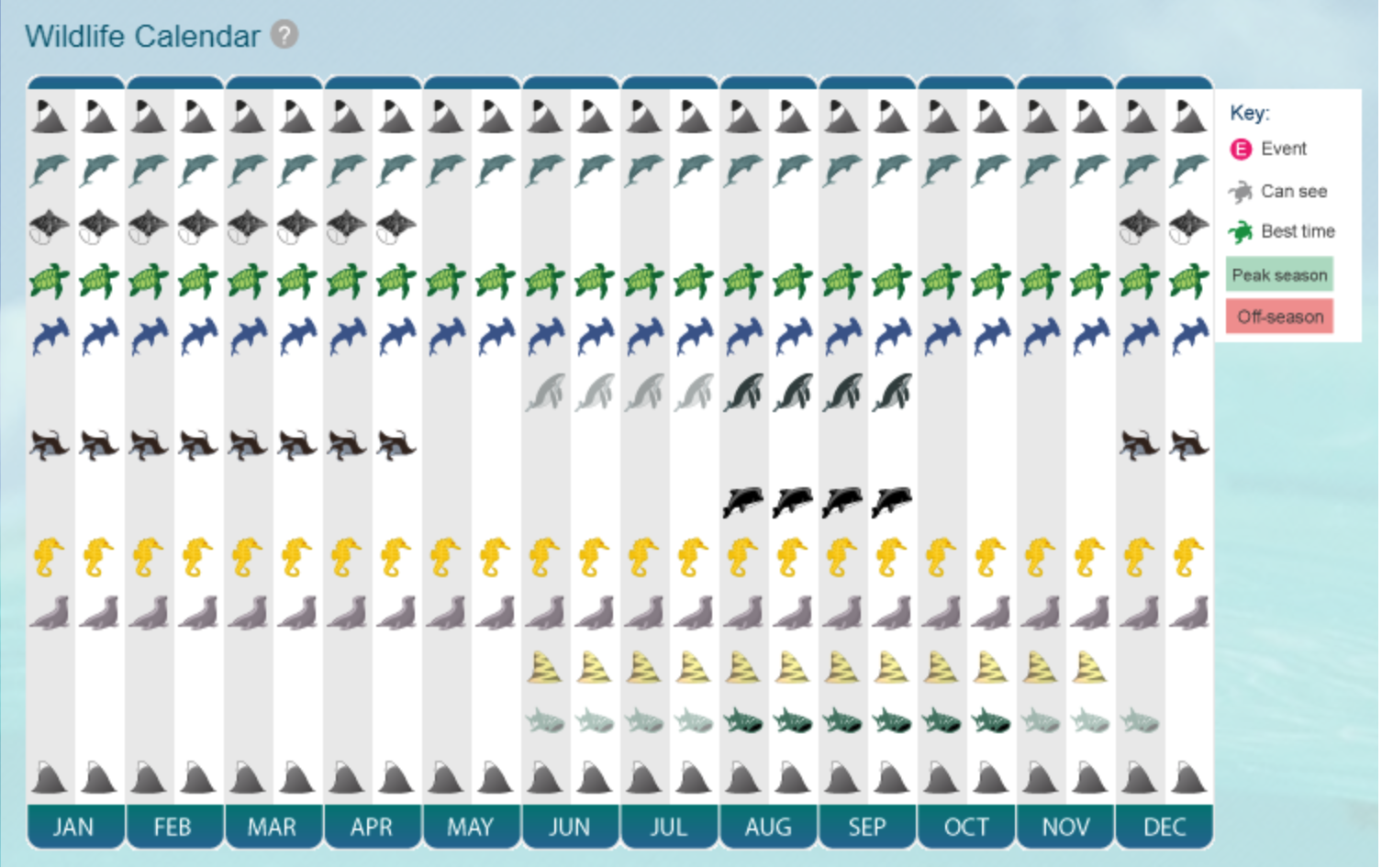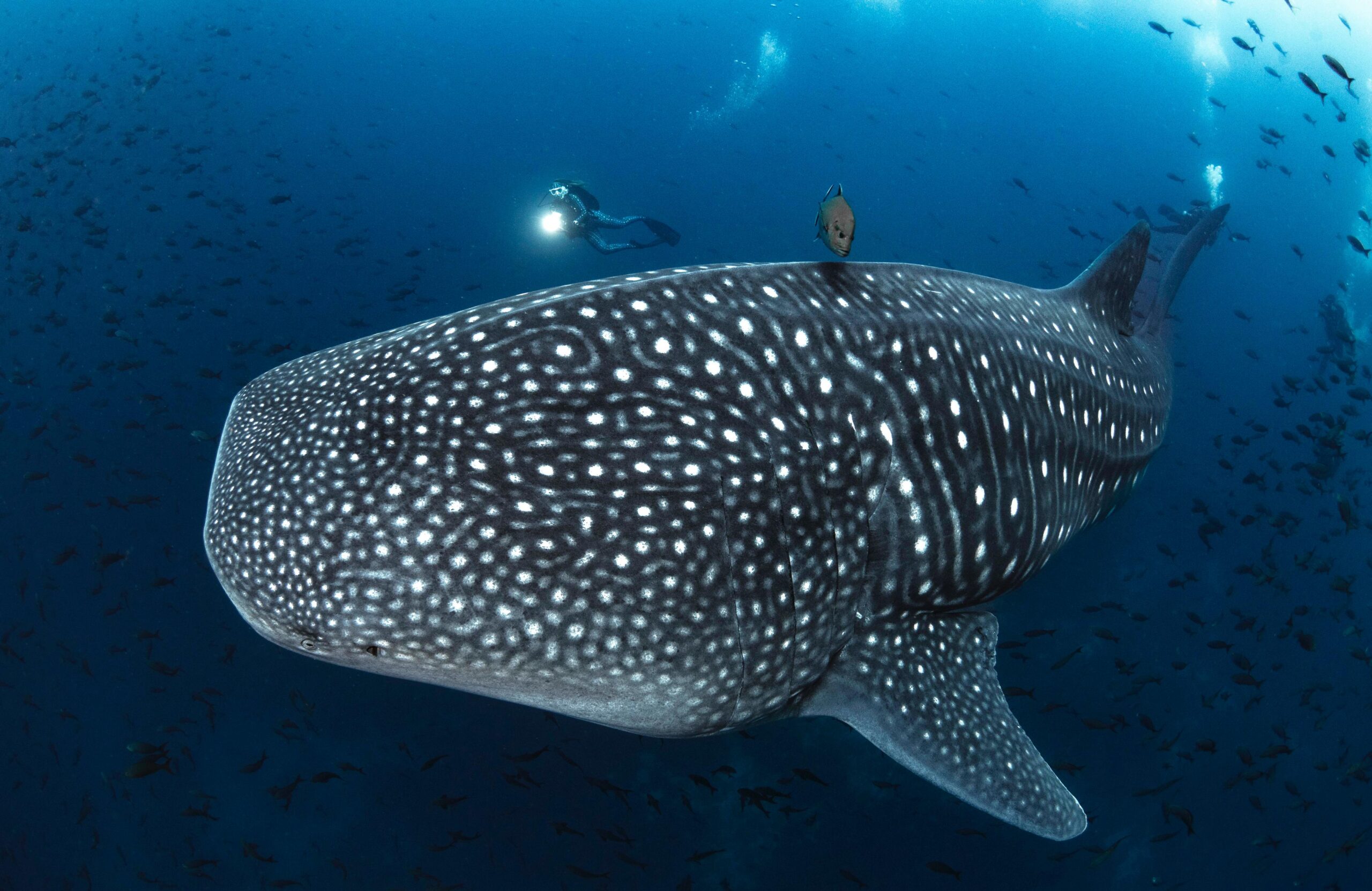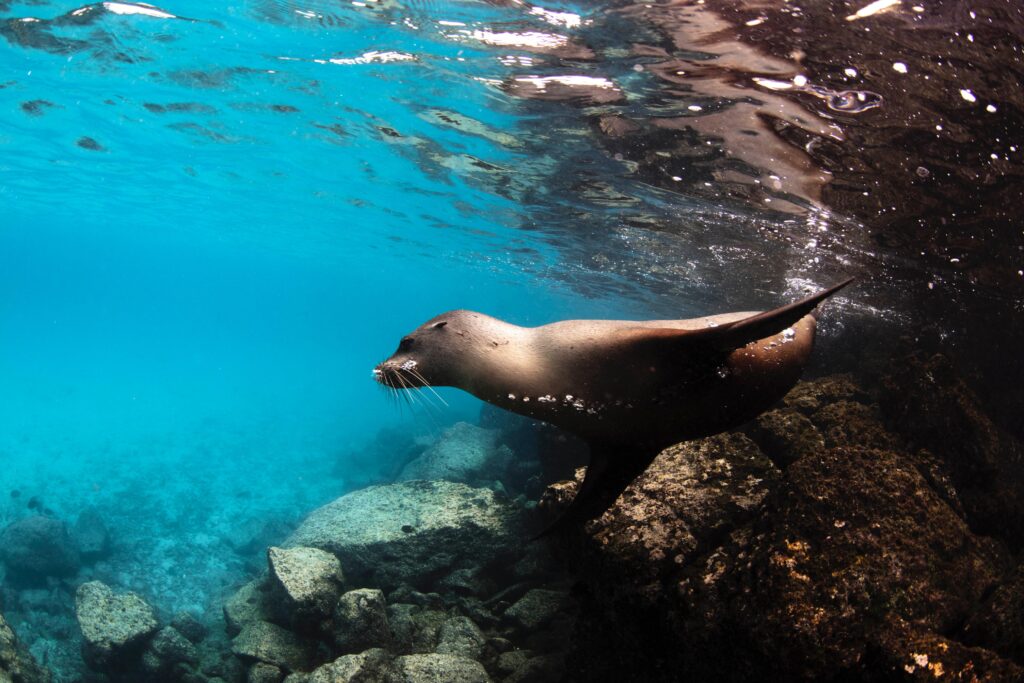
And it is the prevalence of those marine species that takes us there on this live aboard-based dive trip.
If there is one trip any nature enthusiast should have on their bucket list, it is Galapagos
Unique for their rich biodiversity and the presence of numerous endemic species, the Galápagos Islands are like a laboratory for evolution. Their isolation has allowed several unique species to evolve, like the Galapagos tortoise and the marine iguana. In addition, the islands are an oasis in the middle of the ocean, both for numerous bird species as well as marine species.

And it is the prevalence of those marine species that takes us there on this live aboard-based dive trip.

If you like Big Stuff, this is the trip for you. Timed to go in the peak whale shark season, we expect to have close encounters with those gentle giants of the sea. In addition, the islands of Wolf and Darwin – only accessibly by liveaboard – offer the best encounters with large schools of hammerheads. And of course, there are all the other species of sharks, the big schools of jacks, rays and turtles that make the Galapagos truly special in terms of diving
 23/9 – Embark at Baltra, do a check dive
23/9 – Embark at Baltra, do a check dive
24/9 – Carrion Point (2 dives)
25/9 – Wolf Island (4 dives)
26/9 – Darwin Island (4 dives)
27/9 – Wolf Island (4 dives)
28/9 – Fernandina / Isabela (2 dives)
29/9 – Santiago + land excursion (2 dives)
30/9 – return and transfer to Baltra Airport
 While most of the dives are classified as “moderate” in difficulty, there can be some more challenging dives as well. Expect some choppy seas, some currents and cold waters (18-23C) – so a 7mm suit is recommended (and can be hired from the boat). Divers should be able of handling themselves in such situations and our recommendation is a minimum 50 dives as well as experience in currents.
While most of the dives are classified as “moderate” in difficulty, there can be some more challenging dives as well. Expect some choppy seas, some currents and cold waters (18-23C) – so a 7mm suit is recommended (and can be hired from the boat). Divers should be able of handling themselves in such situations and our recommendation is a minimum 50 dives as well as experience in currents.
The payoff, of course, is some of the world’s largest aggregation of megafauna.

For the trip, we will be based aboard the yacht, Galaxy Explorer II, with a crew of 9 and 2 guides catering to 16 passengers in 8 cabins. The boat has been fully refurbished in dry dock recently, and provides a comfortable base for our trip, with a cheerful, fun crew to keep us fed between dives.
A visa is needed for Ecuador. The process takes a bit of time, but we will guide everyone through the process, including referring to agents who can handle preparation of some of the supporting documents.
After landing in Quito, divers will need to take a flight to Batras – this is $450 if booked with the operator, else a $60 handling fee applies if you book it on your own.
Dive insurance is mandatory, and we will provide options for both short term and annual insurance. In addition, travel insurance is strongly recommended.
Trip price: $7100 (the normal retail price for the trip is $7500)
This is for a standard cabin on double occupancy and includes accommodation, diving, meals (lunch from Day 1 to Breakfast on Day 8), water, tea, coffee and afternoon snacks. Nitrox is included on the trip as well as rental of an EPIRB safety beacon.
Payment Schedule:
20% deposit on booking
40% due by January 10, 2026
Balance due by June 10, 2026
Additional Charges:
Flight to/from Quito to Batras: $450
Park Fees: $200
Transit Control Card: $20
Tips: $500-700
Personal expenses: As applicable
Gear rental charges:
Full set: $275
7mm wetsuit: $70
BCD/Reg set: $150
